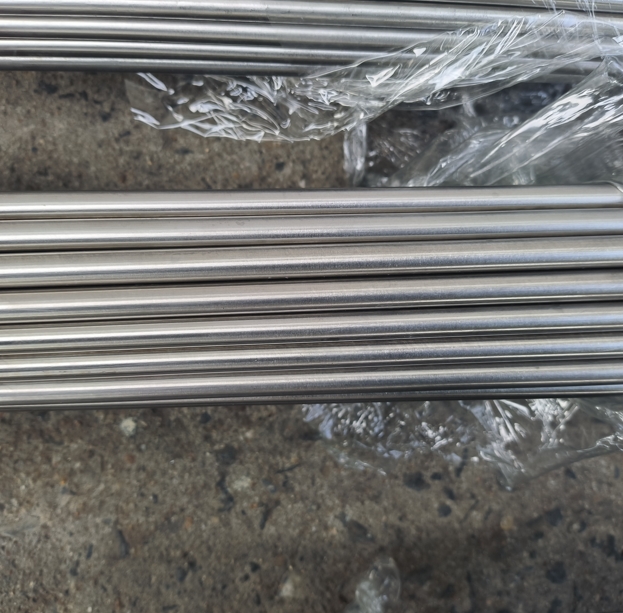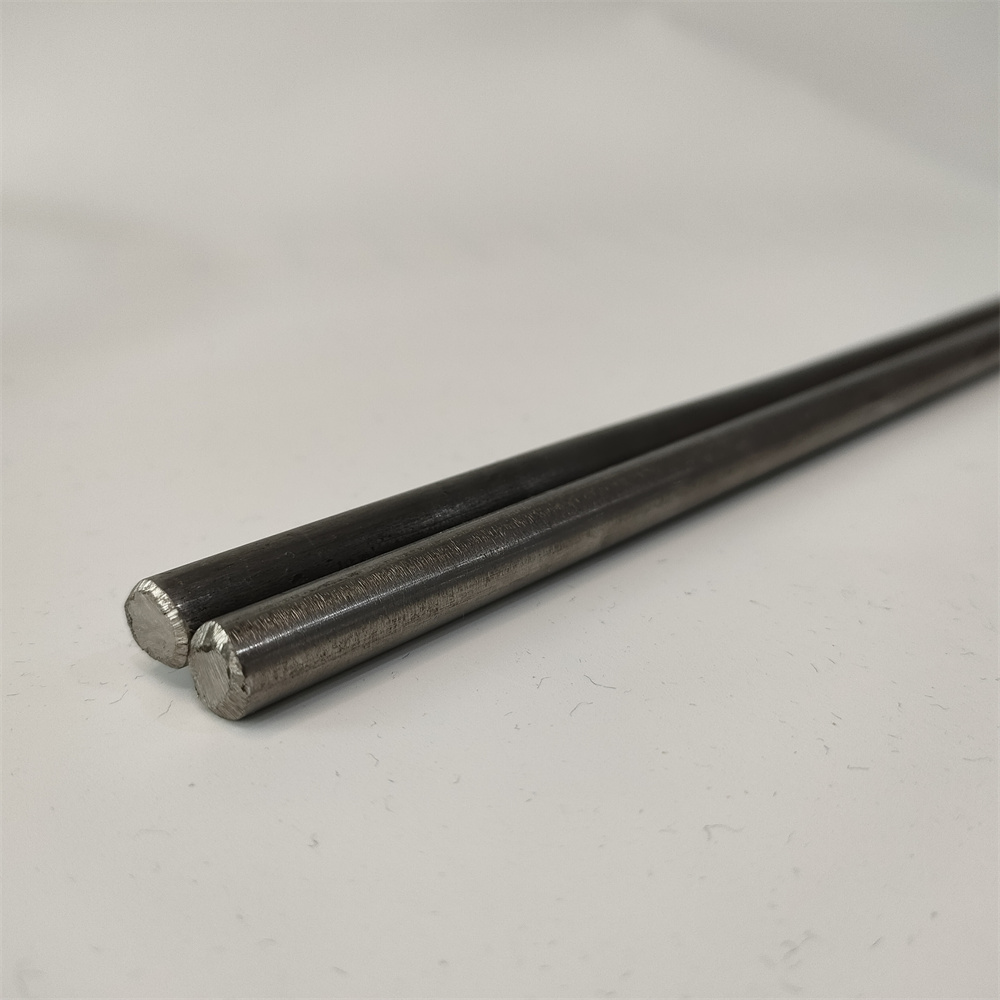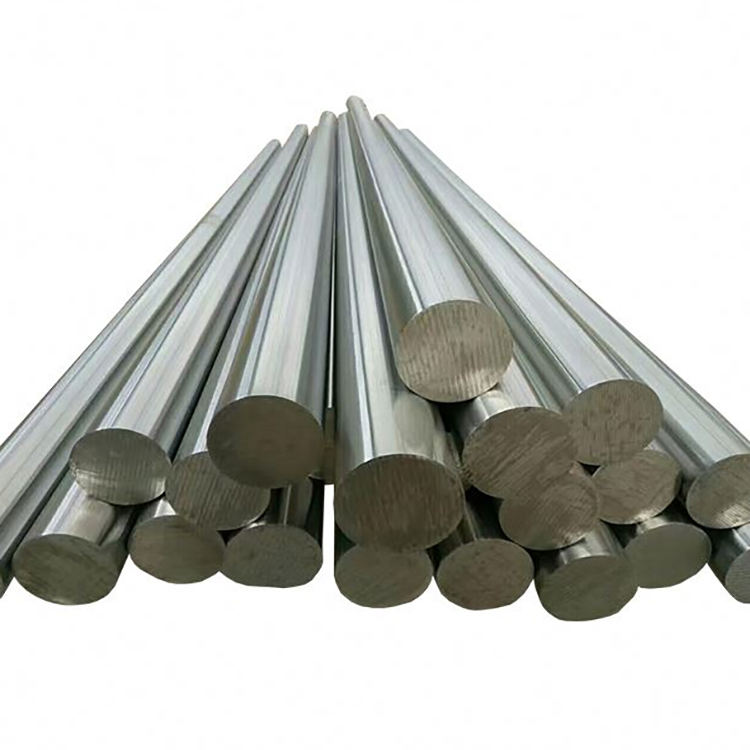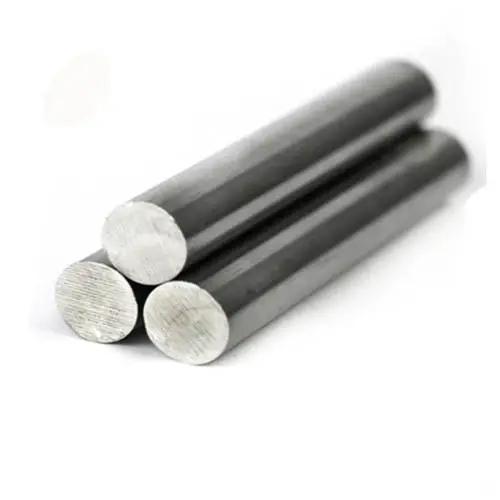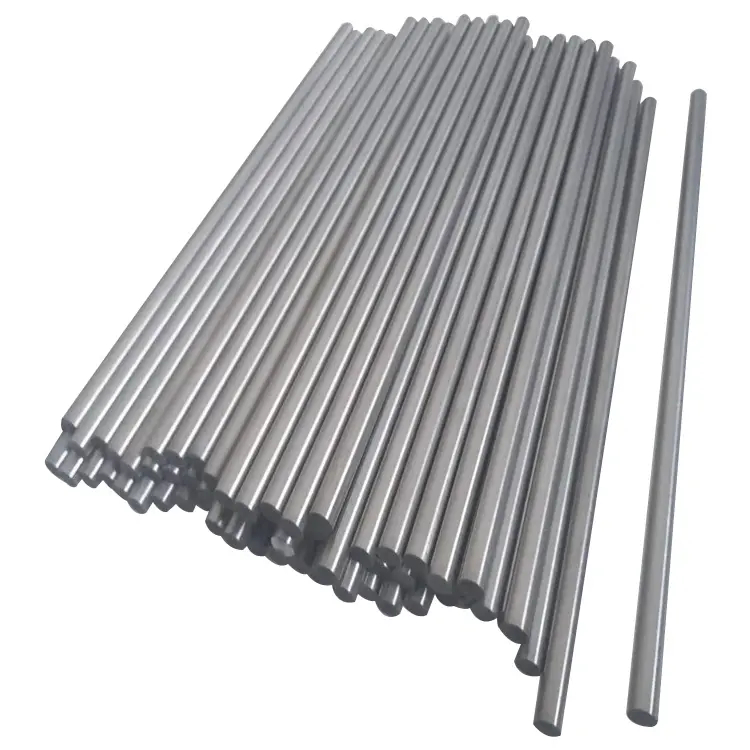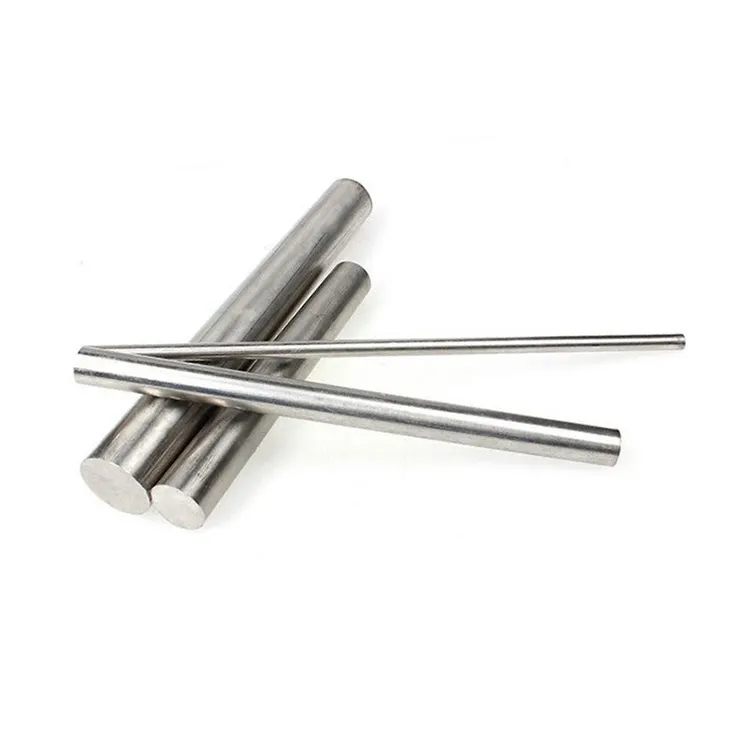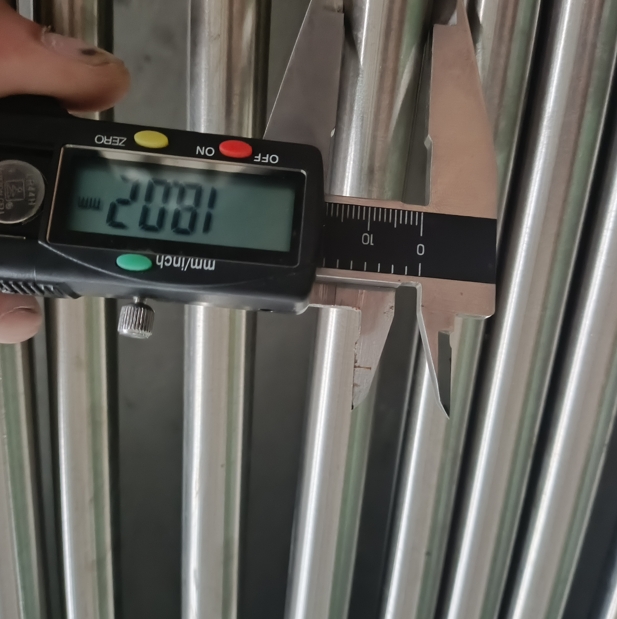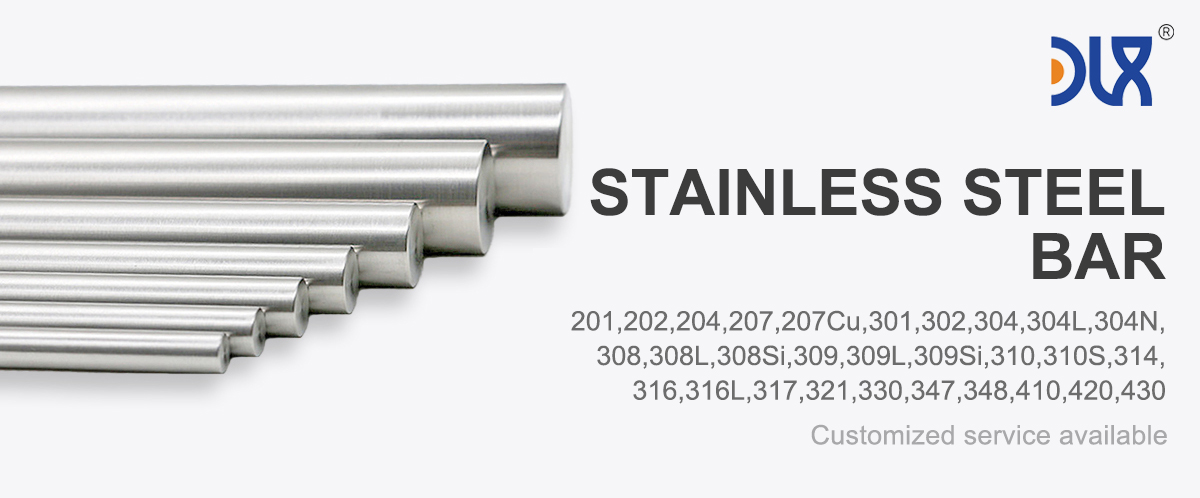
Our customizable 17-4PH stainless steel rod is a standout choice for fracture fixation, delivering the strength and reliability that orthopedic surgeons rely on. This isn’t just any material—it’s a precipitation-hardening alloy engineered to handle the toughest challenges in bone repair. With its high strength, corrosion resistance, and ability to be tailored to specific needs, our 17-4PH rod is perfect for crafting temporary implants like pins, plates, and screws. We’ve optimized every step of our production process to meet ASTM F899 standards, ensuring every rod supports faster healing and better patient outcomes.
The power of our 17-4PH stainless steel rod comes from its unique composition. With 15-17.5% chromium, 3-5% nickel, and 3-5% copper, plus a low carbon content of under 0.07%, it’s built for toughness. Heat treatment lets us dial in properties, hitting tensile strengths of 930-1100 MPa and hardness up to 44 HRC, making it one of the strongest options for fracture fixation. Its yield strength of 725-860 MPa ensures it can handle the mechanical stresses of weight-bearing bones. We precision-forge and finish each rod to deliver consistent quality, whether it’s for a standard plate or a custom-designed pin.
For more details, pls directly contact us.
In fracture fixation, corrosion resistance and biocompatibility are critical, and our 17-4PH rod steps up. The high chromium and copper content creates a robust passive oxide layer, protecting against pitting in the body’s saline-like environment or during repeated sterilization. While it’s not designed for permanent implants due to slightly higher ion release compared to 316LVM, it’s ideal for temporary fixation, with studies showing minimal tissue irritation for short-term use. Our electropolishing process smooths the surface, cutting bacterial adhesion by up to 25%, per clinical data, which reduces infection risks in surgical settings.
The orthopedic implant market is booming, projected to hit $60 billion by 2030, driven by an aging population and advancements in minimally invasive surgeries. Our 17-4PH stainless steel rod is a key player, offering a cost-effective, high-strength solution for fracture fixation. Industry trends are leaning toward patient-specific implants, with 3D printing and CNC machining enabling custom designs. Our rods are optimized for these processes, with excellent machinability for precise shaping. Sustainability is also a priority—our rods are fully recyclable, reducing waste and aligning with healthcare’s push for greener practices.
Comparison of Medical Stainless Steel Grades, Materials, and Applications
|
Grade |
Composition |
Key Properties |
Corrosion Resistance |
Biocompatibility |
Applications |
Advantages |
Limitations |
|---|---|---|---|---|---|---|---|
|
316L |
Fe (60-70%), Cr (16-18%), Ni (10-14%), Mo (2-3%), C (<0.03%) |
Tensile: 485-620 MPa, Yield: 170-290 MPa, Elongation: 40-50%, Hardness: 95 HRB |
Excellent (passive oxide layer, resists pitting) |
High, minimal ion release, rare Ni sensitivity |
Bone plates, screws, stents, hip stems, dental implants |
Cost-effective, machinable, fatigue-resistant |
Possible Ni sensitivity, heavier than Ti |
|
304L |
Fe (65-74%), Cr (18-20%), Ni (8-10.5%), C (<0.03%) |
Tensile: 485-550 MPa, Yield: 170-240 MPa, Elongation: 40-55%, Hardness: 92 HRB |
Good, less resistant to pitting than 316L |
Moderate, higher Ni release risk |
Temporary implants, surgical tools, guidewires |
Affordable, easy to form, widely available |
Limited for long-term implants due to corrosion |
|
17-4 PH |
Fe (70-78%), Cr (15-17.5%), Ni (3-5%), Cu (3-5%), C (<0.07%) |
Tensile: 930-1100 MPa, Yield: 725-860 MPa, Hardness: 30-44 HRC |
Very good, but less than 316L in saline |
Good, but less biocompatible than 316L |
Load-bearing implants, surgical instruments |
High strength, heat-treatable, durable |
Complex processing, less corrosion-resistant |
|
420 |
Fe (80-90%), Cr (12-14%), C (0.15-0.4%) |
Tensile: 700-950 MPa, Yield: 340-450 MPa, Hardness: 45-50 HRC |
Moderate, prone to pitting in body fluids |
Moderate, not ideal for long-term implants |
Cutting tools, temporary pins, dental drills |
High hardness, wear-resistant, sharpenable |
Poor corrosion resistance for permanent use |
|
440C |
Fe (78-85%), Cr (16-18%), C (0.95-1.2%) |
Tensile: 760-1000 MPa, Yield: 450-600 MPa, Hardness: 56-60 HRC |
Moderate, better than 420 but less than 316L |
Limited, high carbon affects biocompatibility |
Surgical blades, high-wear tools |
Extremely hard, excellent edge retention |
Not suitable for long-term implants |
|
F138 (316LVM) |
Fe (60-70%), Cr (17-19%), Ni (13-15%), Mo (2.25-3.5%), C (<0.03%) |
Tensile: 490-690 MPa, Yield: 190-300 MPa, Elongation: 40-50%, Hardness: 95 HRB |
Superior, optimized for medical use |
Excellent, lowest ion release, vacuum-melted |
Orthopedic implants, cardiovascular stents |
Enhanced purity, top biocompatibility |
Higher cost than standard 316L |
|
303 |
Fe (65-75%), Cr (17-19%), Ni (8-10%), S (0.15-0.35%) |
Tensile: 500-620 MPa, Yield: 240-290 MPa, Elongation: 35-50%, Hardness: 90 HRB |
Moderate, sulfur reduces corrosion resistance |
Moderate, not ideal for permanent implants |
Machined components, non-implant devices |
Excellent machinability, cost-effective |
Not suitable for long-term implants |
|
Nitronic 60 |
Fe (60-70%), Cr (16-18%), Ni (8-9%), Mn (7-9%), N (0.08-0.18%) |
Tensile: 620-793 MPa, Yield: 345-414 MPa, Hardness: 95-100 HRB |
Very good, resists galling and wear |
Good, but less studied for implants |
Wear-resistant implants, joint components |
High wear resistance, galling resistance |
Limited medical use, higher cost |
For more details, pls directly contact us.
Challenges in the industry include corrosion, with about 5-10% of stainless steel implant failures linked to prolonged exposure to body fluids. We’re addressing this with research into bioactive coatings, like hydroxyapatite, that improve bone integration and boost corrosion resistance by 20%, per recent studies. Regulatory standards, like FDA and ISO 13485, demand rigorous testing for fatigue and biocompatibility. Our rods exceed these requirements, with each batch validated through ultrasonic testing and chemical analysis to ensure zero defects. The rise of nickel-free alloys is another trend, addressing allergies in 10-15% of patients. While our 17-4PH contains low nickel, its heat-treated structure minimizes release, keeping it safe for most applications.
Applications for our 17-4PH stainless steel rod are diverse, covering critical needs in fracture fixation. It’s a go-to for bone pins and screws, providing the strength needed to stabilize fractures during healing. Bone plates made from our rods distribute loads evenly, supporting recovery in complex fractures like those in the femur or tibia. Trauma surgery benefits too—our rods are used in external fixation devices, offering temporary stability in emergency cases. We’re also seeing use in pediatric orthopedics, where smaller, custom rods support growing bones. Veterinary applications are growing, with our rods crafting implants for animal fractures, proving their versatility across fields.
Comparison Parameters Table
| Parameter | ASTM F899 (316LVM) | ASTM F899 (440C) | Titanium (Ti-6Al-4V) | Cobalt-Chrome (Co-Cr) |
|---|---|---|---|---|
| Density (g/cm³) | 7.9-8.0 | 7.7-7.8 | 4.4-4.5 | 8.3-9.2 |
| Elastic Modulus (GPa) | 193 | 200 | 110-114 | 210-240 |
| Yield Strength (MPa) | 190-300 | 450-600 | 800-900 | 450-1000 |
| Tensile Strength (MPa) | 490-690 | 760-1000 | 900-1000 | 900-1200 |
| Hardness (HRB/HRC) | ~95 HRB | 56-60 HRC | ~36 HRC | 30-40 HRC |
| Corrosion Resistance | Superior (vacuum-melted) | Moderate (good in dry conditions) | Superior in body fluids | Very good, but ion release risk |
| Biocompatibility | Excellent, low ion release | Moderate, suited for tools | Excellent, low reactivity | Good, but Co ion concerns |
| Cost | Moderate | Low | Medium | High |
| Common Applications | Implants, stents, forceps | Scalpels, drills, screws | Joint replacements, implants | Bearings, dental crowns |
| Machinability | Good | Fair | Medium | Low |
Comparing ourselves to the market, our 17-4PH stainless steel rod shines for its quality and customization. We source premium raw materials, using controlled melting to reduce impurities by up to 200% compared to standard alloys. Our heat-treatment processes are fine-tuned to balance hardness and toughness, ensuring pins and plates withstand cyclic loads without cracking. Unlike generic suppliers, we offer tolerances as tight as ±0.003 inches, ideal for precision-machined implants. Every rod is tested for hardness, tensile properties, and ASTM F899 compliance, guaranteeing reliability in every batch.
Customization is where we truly excel. Need a rod with specific strength for a trauma plate or a polished finish for a low-friction screw? We deliver tailored solutions in days, keeping your production on schedule. Our surface treatments, like passivation and electropolishing, enhance corrosion resistance and biocompatibility, reducing infection risks by up to 20%. Cost-wise, our 17-4PH rods offer high performance at a lower price than titanium or cobalt-chrome, making advanced fracture fixation accessible to more hospitals. Our material experts provide hands-on support, helping you integrate our rods into complex designs, saving you R&D time and costs.
For more details, pls directly contact us.


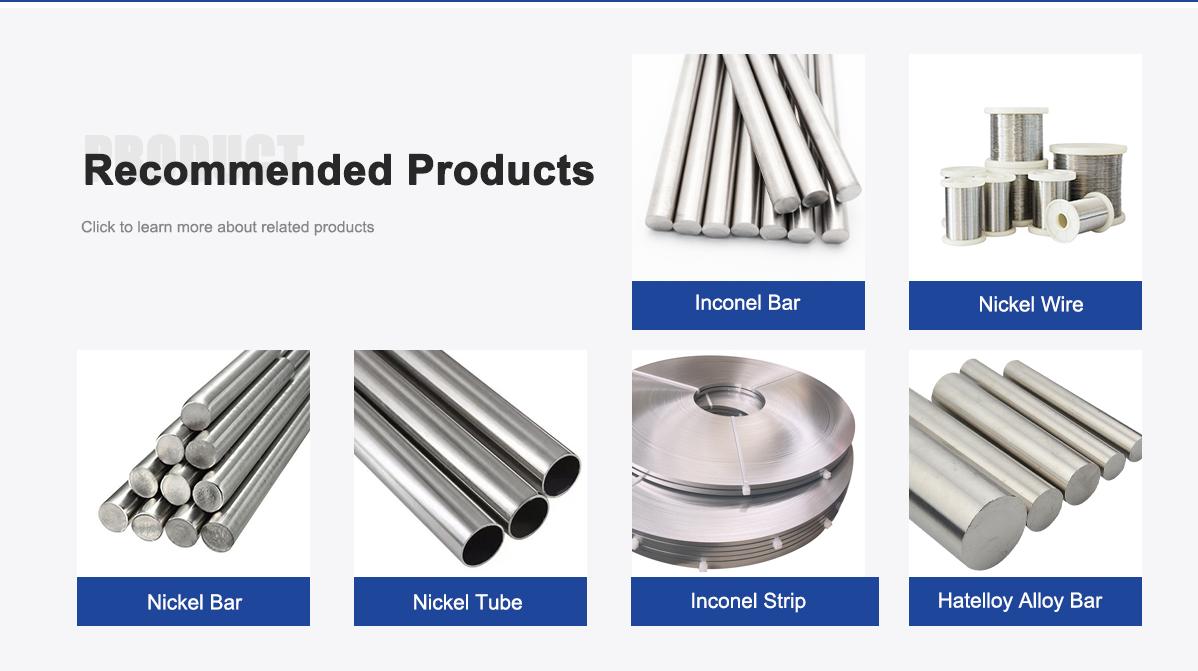
About Us:
Our 12,000㎡ factory is equipped with complete capabilities for research, production, testing, and packaging. We strictly adhere to ISO 9001 standards in our production processes, with an annual output of 1,200 tons. This ensures that we meet both quantity and quality demands. Furthermore, all products undergo rigorous simulated environment testing including high temperature, high pressure, and corrosion tests before being dispatched, ensuring they meet customer specifications.
For all our clients, we offer timely and multilingual after-sales support and technical consulting, helping you resolve any issues swiftly and efficiently.

Client Visits
Building Stronger Partnerships

We support all kinds of testing:


FAQs:
-
What is the composition of ASTM F899 stainless steel?
It varies by grade but typically includes iron (60-85%), chromium (12-19%), nickel (0-15%), molybdenum (0-3.5%), and carbon (0.03-1.2%), tailored for surgical-grade performance. -
What are the key mechanical properties of ASTM F899 stainless steel?
Depending on the grade, tensile strength ranges from 485-1100 MPa, yield strength from 170-860 MPa, hardness from 20-60 HRC, and elongation from 10-55%. -
How is ASTM F899 stainless steel used in custom medical device fabrication?
It’s used for surgical instruments like scalpels, forceps, and drills, as well as temporary implants and precision components in diagnostic equipment. -
What makes ASTM F899 stainless steel suitable for medical applications?
Its corrosion resistance, high strength, and ability to withstand repeated sterilization ensure reliability in sterile, high-stress medical environments. -
What are current industry trends for ASTM F899 stainless steel in medical devices?
Trends include precision machining for miniaturized devices, surface treatments for enhanced biocompatibility, and integration with 3D printing for custom fabrication. -
Is ASTM F899 stainless steel biocompatible for medical use?
Yes, particularly austenitic grades like 316LVM, though martensitic grades like 440C are better suited for tools due to moderate biocompatibility. -
What advantages does ASTM F899 stainless steel have over other materials?
It offers a balance of cost, machinability, and durability compared to titanium or cobalt-chrome, making it ideal for custom, high-precision medical tools. -
How does ASTM F899 stainless steel support sustainability in medical manufacturing?
Its recyclability, long lifespan, and efficient production reduce material waste and the need for frequent replacements, aligning with eco-friendly trends.

